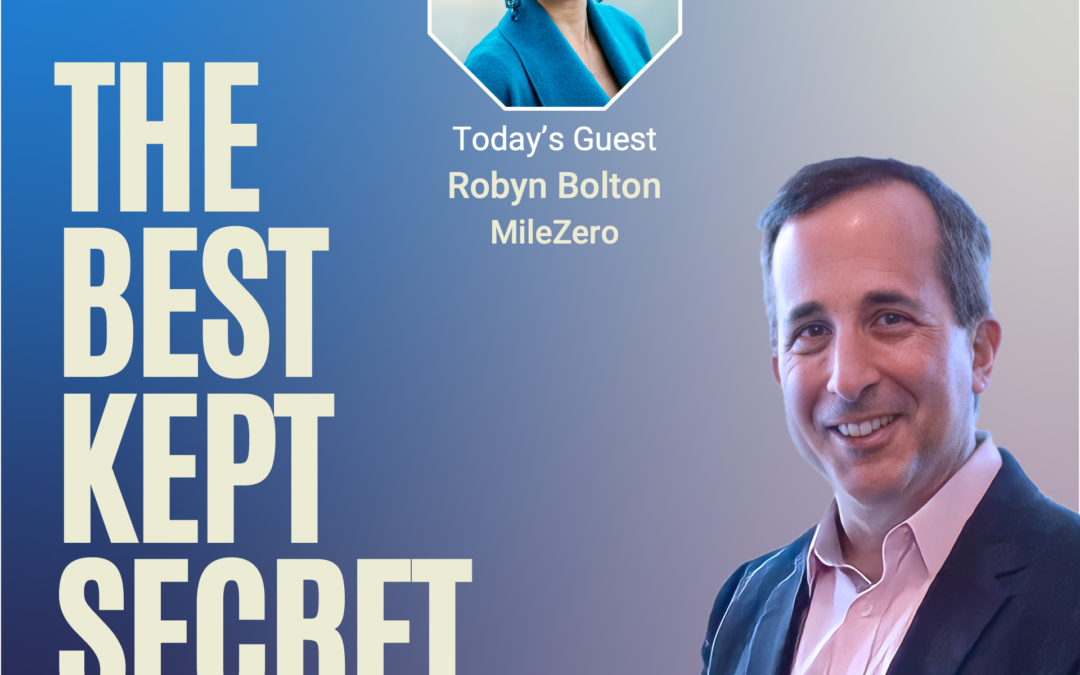


5 Tips to Help Your Innovation Efforts Go the Distance
After months of work, haggling, encouraging, and deep breathing, you finally have your innovation capability up and running.
Your innovation strategy clearly aligns with and supports the overall business strategy. Teams know the boundaries within which they can innovate, understand the results they need to deliver and access the people and tools they need to make progress. Your leadership team regularly engages with innovation teams, talks with customers, and shares progress and learnings with the whole organization.
Your work here is done.
Right?
Wrong.
It’s just beginning.
Building a lasting capability for sustainable and repeatable innovation is a marathon, not a sprint. And while what you achieved is genuinely momentous, it’s also the equivalent of signing up for a marathon, putting on your shoes, and walking out your front door.
In short, you’ve just started training.
Training for a marathon
Full disclosure, I have never run a marathon, and I never intend to. Many years ago, a group of friends decided to run a marathon, and I volunteered to be their Team Manager and handle all travel and game day logistics. Long story short, I missed one of our re-fueling points because I took a nap in the car. Yes, I can’t even drive a marathon without getting tired.
So, to make sure this analogy holds, I sought training advice for beginners from Runner’s World. Here’s what I learned:
- Training usually requires 16 to 20 weeks of running three to five times a week. That’s 48 to 100 training sessions to complete ONE marathon!
- Beginners should focus on finishing the marathon, not their time to complete it. Remember, the first person to run a marathon died. Living to tell your tale is winning.
- You will miss training sessions. If you don’t miss too many (4 weeks or more), you’ll be fine.
- Training is hard. The key is distinguishing “good pain” from “bad pain.”
- Strength training and conditioning are just as important as running is in your training program.
Training for lasting innovation
Full disclosure, I have done a lot of innovation as both an intrapreneur and a consultant. As a result, I can assure you that leaders of newly established innovation capabilities endure a training experience similar to marathoners’.
- Stabilizing your innovation capability to be “the way we do business” takes significantly longer than establishing it. You will have to engage, encourage, advocate, remind, steer, and communicate 48-100 times more now than you had to in the past.
- Organizations should focus on proving that they can successfully create, test, and launch a commercially viable innovation, not finding the next $1B idea. Remember, ideas are a dime a dozen, and the organization is burned out on innovation theater. Launching something that makes money proves that innovation is possible and that is winning.
- You will have failures. If you take the time to learn from them, to find the root cause, and make changes, so they don’t happen again, you’ll be fine.
- Innovation is hard because change and uncertainty are hard. The key is distinguishing “good pain” from bad pain. It’s called “growing pains,” not “growing tickles” for a reason.
- Managing and growing your core business is just as crucial as stabilizing and encouraging innovation. You need to see the whole picture to make the best decisions to reach your short-term AND long-term goals.
What’s your innovation training regimen?
Being a leader is like being a runner – it’s an identity.
Being a leader that supports and enables innovation is like being a marathoner – people think you’re crazy to endure the pain and discipline of training, but they will never know the high that comes from achieving a seemingly impossible goal.
What did I miss in the list above? What’s your innovation training regimen?

Are Your Innovation Efforts Causing People to Quit?
The Great Resignation is real. At the start of 2021, 40% of employees thought about quitting. Between April and September, more than 24MM turned those thoughts into action.
You don’t want your people to be in either of those stats. You value them and their experience, so you work hard to ensure that the most common causes of attrition – poor wages and benefits, toxic culture, worries about job insecurity, and feeling unappreciated – are not issues in your business.
And you don’t stop there. You offer opportunities for professional development, and you’re investing more than ever in innovation.
But if you believe new research published in the MIT Sloan Management Review, your investment in innovation is causing your people to quit.
Are resignations the price you pay to be innovative?
According to the study’s authors, “high levels of innovation” is the third-highest predictor of attrition behind only toxic work culture and job insecurity and reorganization.
“In the Culture 500 sample, we found that the more positively employees talked about innovation in their company, the more likely they were to quit.”
They go on to explain that “Staying at the bleeding edge of innovation typically requires employees to put in longer hours, work at a faster pace, and endure more stress than they would in a slower-moving company. The work may be exciting and satisfying but also difficult to sustain in the long term.”
Ok, fair. But let’s dig a bit deeper.
The three most innovative companies in the Culture 500 (the dataset used for analysis) are Nvidia, Tesla, and SpaceX. At least two of those (Tesla and SpaceX) are infamous for their toxic work cultures, to the extent that lawsuits are pending against both.
That’s especially important because “Toxic Corporate Environment” is the #1 predictor of attribution in that it is “10.4x more likely to contribute to attrition than compensation.” The #2 predictor, “Job insecurity and reorganization,” is only 3.5x more likely to contribute to attrition, and innovation is 3.2x more likely.
Sure, the data says that innovation is a predictor of resignations. Still, I think the reality is that companies are using “innovation” as an excuse for their toxic work cultures. It is toxicity, not innovation, that is causing people to quit.
Resignations are the price you pay for pretending to be innovative
Far more common, at least in my experience, is that companies and leaders that engage in innovation theater are far more likely to lose people due to “innovation.”
Here’s how it plays out:
- Innovation events give people hope. Hackathons, shark tanks, even ideation sessions create the impression that the company is serious about innovation. The company’s investment of time and resources into these events sends a message that it wants to hear employees’ ideas and is willing to invest in the good ones and see them through.
- Innovation training gives people skills and changes their mindsets. Incubators, accelerators, and one-off trainings in topics like design thinking and lean startup teach employees how to innovate and give people the experience of innovating. Through that experience, people realize that they are creative, have good ideas, and can drive change. They begin to see what is possible and believe they can make it happen.
- Everything goes back to “business as usual,” and people are left disappointed and disillusioned because the company wasn’t committed to anything beyond an event. People are also left newly aware of the possibilities and empowered to take advantage of them. They realize that the company is all talk when it comes to innovation, but they have the power to walk. And they do.
You’re doing the right things. Now keep doing them.
Your investments in professional development and innovation are spot on.
And, In the near term, they will lower attrition and help you attract phenomenal talent,
But if you want to keep your people for the long term, you need to keep investing in professional development and innovation.
Design hackathons and shark tanks with a plan for what happens after the event, how people will stay engaged, and how the company will continue to see and learn from the resulting projects.
Run incubators, accelerators, and trainings and give people permission to apply the methods and tools in their day jobs, reward them for using what they learned and teaching others, and hold managers accountable for supporting and encouraging these new behaviors and mindsets.
These are just a few ways you can be innovative AND retain your best people. I’m sure there are lots more.
What are they? How are you being innovative?

Are YOU the barrier to innovation in your company? (and how to make sure the answer is ‘No!’)
It’s January, and even though the end of the year feels far away, you know that it will be here in no time, and you’ll have to deliver on those revenue and profit numbers you committed to during Strat Plan.
You know that growth in your existing business and cost-savings in your operations will get you partway there, but they won’t get you all the way to those goals (and the fat bonus that goes with them).
You know your business needs to innovate and not just this year but next year, and the year after that, and the year after that, and….
You know you need to start now. You also know that whatever you do has to produce results and become the way your business does business in the future. But this has been tried before with mixed (or no) results.
Time to put on your Innovation HAT
Innovation is a leadership problem, and the very best leaders, the ones who turn innovation from an organizational problem into a revenue-generating answer, are honest about what’s needed and what’s possible, action-oriented, and mentally and intellectually tough.
In other words, on Day 1, they put their innovation HAT on, and they don’t take it off until innovation is a business capability ingrained in the organization like marketing, finance, and operations.
Honest
As a leader, you first need to be honest with yourself. You know the results you need to deliver and the ones you want to deliver, but are you realistic about what you can deliver?
I once had a CEO ask her innovation team of 3 people to develop a new business from scratch, launch it in 12 months, and deliver $250M revenue in its first year.
She was not honest with herself and, as a result, did not set realistic goals for her team (which, not surprisingly, was disbanded 12 months later).
I also worked with a CEO who asked his team to develop new sources of revenue from scratch that would generate at least $1 revenue that year. Several years later, the business has doubled, and much of that growth comes from sources that didn’t exist when the CEO set his original goal.
Action-oriented
If you want something different, you need to do something different.
While it’s helpful to spend the first few months engaging in an audit of your existing capabilities and resources, developing an innovation strategy, and designing the supporting structures and processes, it can’t come at the expense of doing innovation.
The most effective innovation leaders know that talking and, more importantly, listening to customers is a “No regrets” activity. They understand that no matter the results of the audit, the strategic priorities, or the structure and process design, talking to customers will deliver valuable insights.
They take action to gather the insights that will fuel innovation while they also lay the foundation for a sustainable innovation capability.
Tough
It takes 66 days to build a new habit.
It takes about three years to build and solidify an innovation capability.
You need to be tough and resilient during those three years because those years will be filled with some wins and a lot of losses. You’ll face questions, challenges, and even ridicule. You will have to lift up, encourage, and advocate for your team despite your concerns and doubts. You’ll have to celebrate the first $1 of revenue with the same enthusiasm as you celebrate $100M in your existing business.
What’s your Innovation HAT?
Like all great hats, your Innovation HAT can (and should) be embellished with other qualities and flourishes the reflect you, your leadership style, and your vision for the organization.
What should be part of every leader’s innovation HAT?
What unique flourish do you add to yours?

Psychology Safety: Innovation Requirement or Red Herring?
“Why doesn’t anyone bring me ideas?”
“Why doesn’t anyone ask questions during my meetings?”
“How can I get people to challenge my ideas?”
If you have asked any of these questions, you are not alone.
I hear these questions from managers to C-suite executives in every industry imaginable because they know that sharing ideas, asking questions, and challenging others are core behaviors in innovation.
The answers vary by person and the company, but all tend to fall under the umbrella of “Lack of Psychological Safety.”
No one wants to hear that the culture of their team or their organization isn’t “Psychologically Safe.” Does that mean that the culture is “Psychologically Unsafe?” That doesn’t sound good. That sounds like a lawsuit. And even if the culture isn’t “unsafe,” what does “safe” look like?
These are some of the questions that Timothy R. Clark sets out to answer in his book, “The 4 Stages of Psychological Safety: Defining the Path to Inclusion and Innovation.”
What is “Psychological Safety?”
Academics have studied Psychology Safety since the 1960s, but Amy Edmondson’s 1999 paper ushered it into daily use. Today, Psychological Safety is commonly defined as a shared belief that one will not be punished or humiliated for speaking up with ideas, questions, concerns, or mistakes.
Clark goes a step further to identify four types, or stages, of Psychological Safety:
- Inclusion Safety: People feel safe and accepted for who they are, including the different and unique aspects of themselves
- Learner Safety: People engage in the learning process by asking questions, giving and receiving feedback, experimenting, and making mistakes
- Contributor Safety: People use their skills and abilities to make a difference in the team and/or organization
- Challenger Safety: People speak up, challenge the status quo, and pursue opportunities for change or improvement
Each type builds on the other, which means that, as a leader, you can’t have a culture in which people challenge your ideas (Challenger Safety) if they don’t feel that they belong (Inclusion) AND comfortable asking questions AND are willing to work to improve or change things.
That’s a tall order as far as culture goes. Add to that the common belief that all four types of Psychological Safety are required for innovation, and it’s no wonder you feel overwhelmed by the task of creating an innovative organization.
How much Psychological Safety is required for innovation?
That depends on what you mean by “innovation.”
(sorry, I know that’s a lame “consultant” answer, but it’s true, so stick with me)
If what you mean by “innovation” is something that improves what you already do and how you do it (core innovation) or changes one element of what you do or how you do it (adjacent innovation), then you don’t need all four stages.
Contributor Safety is Required
Core and Adjacent innovation aren’t sexy. But, for most companies, they are sufficient to inspire and grow the business for at least 5-10 years.
As a leader, of a large existing business, with hundreds or thousands of employees and customers, multiple sites, and complex operations, you can’t possibly know everything that’s happening everywhere. So you rely on your employees to work hard, do their best, and bring all their skills and experiences to bear for the organization. You need them to ask, “How can we do this better?” and develop an answer. You need them to contribute.
To ensure that your employees contribute to operations AND innovations, you need to build and sustain a culture where people feel they belong, are encouraged to learn (even from mistakes), and contribute their thoughts based on their knowledge.
Challenger Safety is a Red Herring
Radical, breakthrough, and disruptive innovation are sexy. But it’s insanely hard because it requires the creation of a new business model AND the destruction of the existing one.
The good news is that most companies don’t need to destroy their existing business and replace it with something new. As a result, they definitely don’t need employees constantly challenging the status quo. Questioning the status quo by asking, “How can we do this better?” is fine. Asserting that everything needs to be changed or else is counterproductive.
As a leader, it’s a good idea to cultivate Challenger Safety with a small circle of trusted advisors. Even one person who has permission to challenge you is sufficient. That is how you get to the best idea and create the most value.
You don’t need an entire organization challenging each other and everything they do. That is how you get frustration, chaos, and destroy value.
It’s And, not Or
Psychological Safety is an innovation requirement AND a red herring.
If you know the type of innovation you want, what results you need, and when you need them, you can focus your efforts on creating and sustaining the right level and scope of psychological safety required to deliver on those goals.
Which makes me wonder….
What type of Psychological Safety does your team need?
What do you do to build Psychological Safety?
How do you encourage people to share ideas and ask questions?
Share your answers in the comments. I promise to respond to each one AND I’m certain your fellow innovators will thank you.